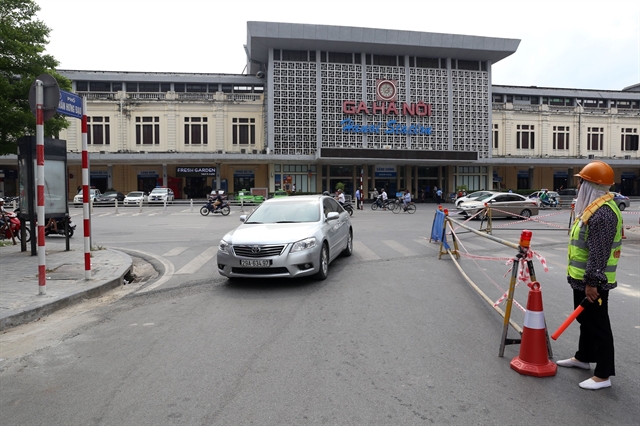 Society
Society

While Việt Nam Railway wants to keep its stations in city centres, many localities plan to push them to outlying areas, pleading pressure on inner-city traffic infrastructure, Thanh Niên (Young People) newspaper has reported.

|
| Hà Nội Railway Station. Experts recommend keeping stations in city centres to serve as interchanges for public transport. — VNA/VNS Photo Huy Hùng |
HÀ NỘI — While Việt Nam Railway wants to keep its stations in city centres, many localities plan to push them to outlying areas, pleading pressure on inner-city traffic infrastructure, Thanh Niên (Young People) newspaper has reported.
In 2017, Hà Nội Police put forward a proposal to move the historic Hà Nội Railway Station, which was built in 1902, to the other side of the Hồng (Red) River or Thường Tín District, saying with 10km of railway running through the capital and many level crossings, the station was putting an enormous burden on the city’s traffic infrastructure and posing the threat of accidents.
The railway sector fiercely opposed the plan.
Before Hà Nội, the Government had given permission to Đà Nẵng to move its railway station out of the city centre under a public-private partnership model. The project, however, has been delayed due to funding difficulties.
Đà Nẵng recently relaunched the project under the form of a build-transfer (BT) model with total investment of VNĐ12 trillion (US$516.5 million).
The central provinces of Bình Định and Khánh Hoà have also shown an interest in relocating their main railway stations in Quy Nhơn and Nha Trang.
The Ministry of Transport has approved the Hà Nội-based Tuấn Dung Group to conduct a pre-feasibility study in Nha Trang in the form of a BT. In return, the corporation will receive an area of land where the current station is located once it moves.
“Golden locations” where railway stations are located in big cities are targets of many large private developers. Therefore, relocating stations is not simply a question of easing traffic congestion but also of a conflict of interest among authorities, citizens and enterprises.
There are rising concerns about how these areas will be used when stations are relocated. If new apartments or high-rise offices are built, the initial purpose of reducing traffic jams will not be accomplished.
The historic, cultural and architectural values of stations also need to be considered before they are relocated.
Tokyo, Paris, Frankfurt and Beijing all have railway stations in downtown areas, serving huge numbers of passengers each day.
Vũ Anh Minh, director of the Việt Nam Railway Company, said the railway had two preeminent characteristics – safety and convenience in terms of favourable locations. Big cities usually develop overpasses or tunnels to address traffic congestion caused by inner-city railways instead of relocating stations to save expenses.
“Localities are not interested in railways because they do not generate fast money. However, they must ensure the benefits of citizens, the country and the railway sector in developing projects,” he said.
To utilise stations’ “golden locations”, Minh said they planned to upgrade existing facilities for use as offices.
Architect Ngô Viết Nam Sơn said central stations such as Hà Nội and Sài Gòn could become interchange hubs connecting North-South routes with metro lines. Relocating these stations would mean missing a chance to develop public transport.
“To reduce congestion, the railway sector could reduce freight carried to and from central stations and focus on transporting passengers instead,” he said. — VNS




